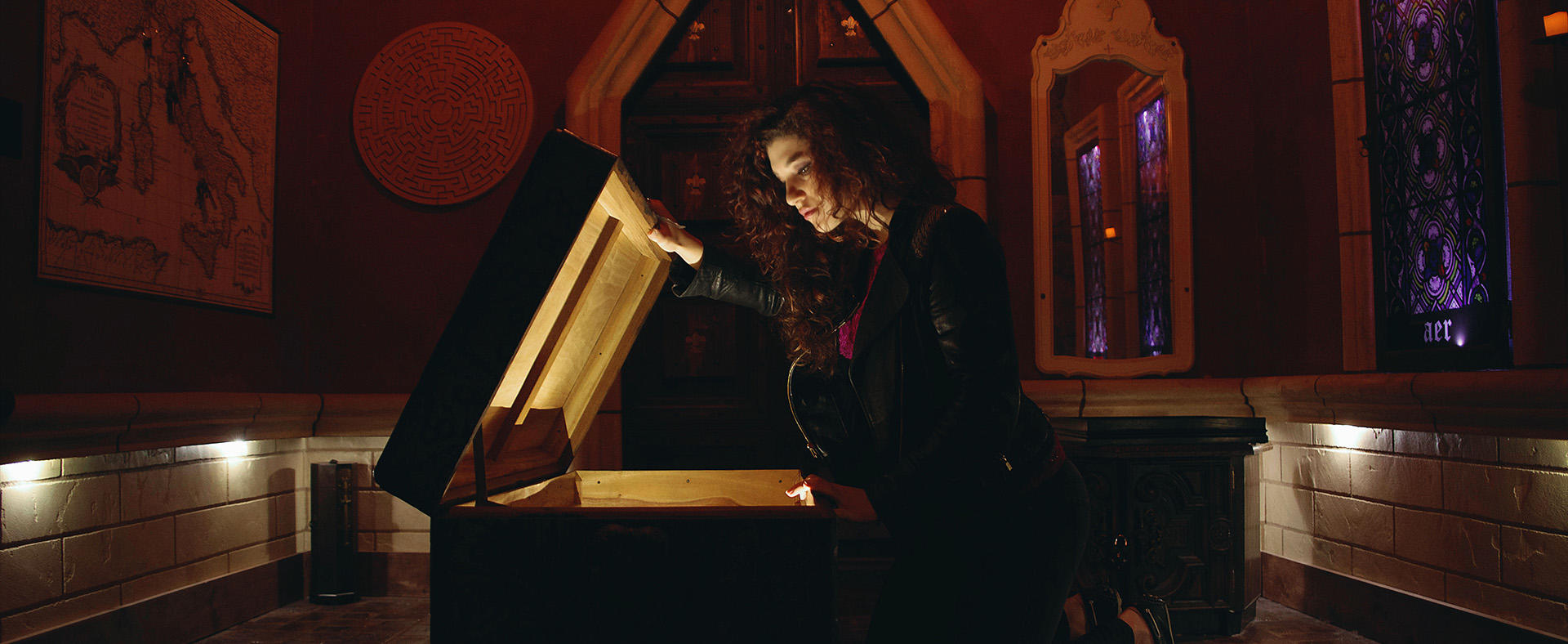

It also paid off as the episode reached its climax. Once again, it was an effective use of da Vinci’s brilliance while also being subtle. Much like last week, da Vinci’s story was about making a single connection through a language barrier. It didn’t come as a surprise that da Vinci was the one to see the Incans as more than savages and it was great to see him spend the entire episode trying to piece together their language. The journey through the jungle and the encounter with the first Incan were well paced as the story methodically built to what was an incredibly suspenseful conclusion that also delivered a few surprises. Everything else felt largely like setup for what transpired in this episode and what will transpire in the latter half of the season. That’s not unexpected, as Season 2 has largely been sold on the novel idea of Da Vinci exploring the New World. This has been the first episode in some time in which the da Vinci story arc has been easily the best. Clarice is back after being absent last week and continues to thwart usurpers to her husband’s republic in style. Meanwhile, Lorenzo and Piero meet with Duke Alfonso and King Ferrante (Matthew Marsh) in an encounter that takes a turn for the weird. Intuitive offers a four-level training program, but cannot legally require surgeons to complete it and cannot train surgeons on patients.Da Vinci’s journey to the New World finally reaches its conclusion this week as his party sets foot on uncharted territory in search of the Vault of Heaven and the Book of Leaves.

Is that okay? Is that okay? Would you be okay with that?' " "So if we lived in that world we would tell the patient, ‘I’d like to operate on you, but I didn’t have the time or money to have all the training that I really think that we ought to have had. "We should live in a world where we practice brutal transparency with our patients," said Poston. Poston says while he has now done about 1,200 procedures using the da Vinci, before he did his first he had only had two hours of training on the device, and is deeply concerned that many other surgeons are inadequately trained. "We shouldn't be operating until we've done all of the training that we think is reasonable." Surgeons operate a da Vinci Surgical robot to remove the tumor at the First Affiliated Hospital of Sun Yat-sen University in Guangzhou, Guangdong province of China on April 15, 2015. "It's woefully inadequate, woefully inadequate the way it's currently being done," said Poston.
#THE HOUSE OF DA VINCI 2 REVIEW SOFTWARE#
Recalls in the past two years include minor adjustments such as instruction clarifications and software updates, as well as more serious recalls such as a surgical knife that may not move when needed to cut, surgical arms that could fail, and others that could unexpectedly move. Recalls associated with the device have steadily declined over the years, peaking in 2014 with 49 but dropped to one a year in both 20. BSIP / UIG via Getty Images fileĪt the same time, the machine has had 175 recalls in the past decade, according to an NBC News review of recalls filed with the FDA.

The FDA uses the database as a key tripwire to spot problems with medical devices, but it has acknowledged that the reporting system has limitations and can contain "incomplete, inaccurate, untimely, unverified, or biased data." Medical personnel remove a donor's kidney with the da Vinci robot on March 27, 2018.

The FDA told NBC News it granted permission to Intuitive Surgical to bundle multiple adverse events that are the subject of lawsuits into a single filing. In one instance, Intuitive combined 200 injuries into a single filing. More than 2,000 adverse events were categorized as involving injuries, 274 were categorized as deaths, and nearly 17,000 events were classified as device malfunctions - some minor, others more serious, including robotic arms uncontrollably going in the wrong direction and insulation cracking off and dropping inside patients' bodies.īut NBC News also found in the data that there were 12 instances of Intuitive batching large numbers of adverse events into one report. has increased by 52 percent since 2013, to nearly 700,000 procedures in 2017. The number of da Vinci surgeries performed in the U.S. To be sure, the da Vinci is used in a large number of surgeries and the adverse events appear to occur in a relatively small portion of the overall surgeries. Intuitive Surgical, the maker of the da Vinci, filed the great majority of the reports, though some were also filed by hospitals, doctors and patients. Food and Drug Administration MAUDE database over the past 10 years showed there were more than 20,000 adverse events related to the da Vinci filed with the FDA. An NBC News analysis of adverse event reports filed in the U.S.


 0 kommentar(er)
0 kommentar(er)
